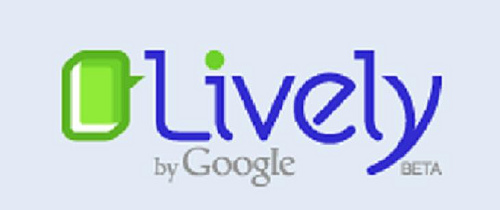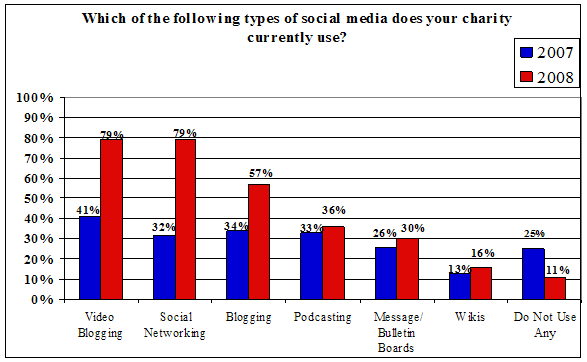As we head into the second decade of the new millennium (okay, it technically doesn’t begin for another year, but stick with me), it’s worth remembering where media stood just 10 years ago.
In December, 1999, few people had heard of Google. Online advertising was banners and e-mails. Big media brands dominated the Web. US newspaper ad revenue would hit record levels in 2000. Newsroom employment would peak in 2001 as newsstand sales of the top 100 magazines approached 30 million. No one had heard of blogs. People used mobile phones to talk.
Fast forward to 2009. This year, people spent six billion minutes on Facebook, downloaded one billion YouTube videos and logged over 1.4 million blog entries every day. The iPhone became the first mobile phone to be used more for data than for voice. The Internet became the second most popular news medium behind television. Wikipedia posted its three millionth article.
Meanwhile, US newsroom employment fell to a 25-year low and magazine newsstand sales dropped to 63% of their 2001 peaks. Reader’s Digest declared bankruptcy. Comcast said it would buy NBC.
The statistics go on and on. In just 10 years, our century-old mass-market media model has given way to a new structure dominated by the economics of one. Customers now take their opinions directly to the market. Woe to organizations that don’t listen.
The contraction of mass-market media has brought plenty of pain. Tens of thousands of media professionals have lost their jobs in the past two years, crowdsourcing has sent some professional fees into a tailspin and veteran marketers are under threat if they don’t “get” social media. But this pain is necessary, even beneficial in the long run.
New Efficiency
That’s because media has historically been one of the least efficient disciplines on the planet. It’s a profession that declares success if only 97% of its audience ignores an ad or tosses the mailer into the trash. It gains one customer at the expense of annoying 50 bystanders. When department store magnate John Wanamaker said half his ad dollars were wasted, but “I don’t know which half,” he was being generous.
The new Internet has flipped the economics. As media control has passed from institutions to individuals, waste has begun to be worked out of the system. The cost of reaching a targeted customer will only decline in the years to come. Sadly, efficiency will also devastate those industries and professions that thrived on media’s historical inefficiency.
While mourning the loss of comfort and security that old media once provided, we shouldn’t get caught up looking backward. More competitive markets will bring new options for reaching customers. The marketers who survive will be those who put the past behind and move quickly to take advantage of these new efficiencies.
Let’s start the year not by mourning the losses of the last decade but by learning the skills we’ll need to survive the next.
What changes will we be looking back upon a decade from now? Post your predictions as comments.

 Last week, Google changed the rules of Web search with a relatively low-key innovation that I expect will permeate the search engine giant’s future strategy.
Last week, Google changed the rules of Web search with a relatively low-key innovation that I expect will permeate the search engine giant’s future strategy.
 Google also isn’t afraid to cut its losses. The company has shut down more than a half-dozen products and services in the last year, including Lively, it’s virtual world (left). It has also closed a couple of high-profile business ventures. Google makes no attempt to hide these business decisions but rather explains its reasoning on employee blogs. That’s because Google sees itself as an innovator, and innovative companies don’t mind getting things wrong now and then. In fact, a company that doesn’t make mistakes isn’t trying hard enough.
Google also isn’t afraid to cut its losses. The company has shut down more than a half-dozen products and services in the last year, including Lively, it’s virtual world (left). It has also closed a couple of high-profile business ventures. Google makes no attempt to hide these business decisions but rather explains its reasoning on employee blogs. That’s because Google sees itself as an innovator, and innovative companies don’t mind getting things wrong now and then. In fact, a company that doesn’t make mistakes isn’t trying hard enough.
 Early this week, candy maker Skittles rocked the media by giving over its entire home page to a list of
Early this week, candy maker Skittles rocked the media by giving over its entire home page to a list of 
 There’s no question Mars could have thought through this experiment somewhat better. Twitter was a bad place to start and under the circumstances, some filtering would have been appropriate. However, the whole concept of giving over the Skittles Web presence to customer conversations is daring and innovative. It’s unfortunate that some of the same people who trash brands for not being more hip to social media are now trashing Mars for almost being too hip.
There’s no question Mars could have thought through this experiment somewhat better. Twitter was a bad place to start and under the circumstances, some filtering would have been appropriate. However, the whole concept of giving over the Skittles Web presence to customer conversations is daring and innovative. It’s unfortunate that some of the same people who trash brands for not being more hip to social media are now trashing Mars for almost being too hip. Experimentation is central to new media marketing and negative reactions to bold ideas are nothing to be feared. Nearly three years ago, General Motors invited visitors to stitch together their own video ads for the Chevrolet Tahoe SUV. About 15% of the videos people created were negative, prompting critics to
Experimentation is central to new media marketing and negative reactions to bold ideas are nothing to be feared. Nearly three years ago, General Motors invited visitors to stitch together their own video ads for the Chevrolet Tahoe SUV. About 15% of the videos people created were negative, prompting critics to  Perry Allison (left), Vice President of Social Marketing Innovation at
Perry Allison (left), Vice President of Social Marketing Innovation at  Pam Johnston (left), Vice President of Member Experience at
Pam Johnston (left), Vice President of Member Experience at  Best New Face –
Best New Face –  Best Viral Marketing Success – Cindy Gordon told just seven people about Universal Orlando’s plans to launch a Harry Potter theme park. Word of mouth spread the story to 350 million others in a matter of a couple of days.
Best Viral Marketing Success – Cindy Gordon told just seven people about Universal Orlando’s plans to launch a Harry Potter theme park. Word of mouth spread the story to 350 million others in a matter of a couple of days. 
